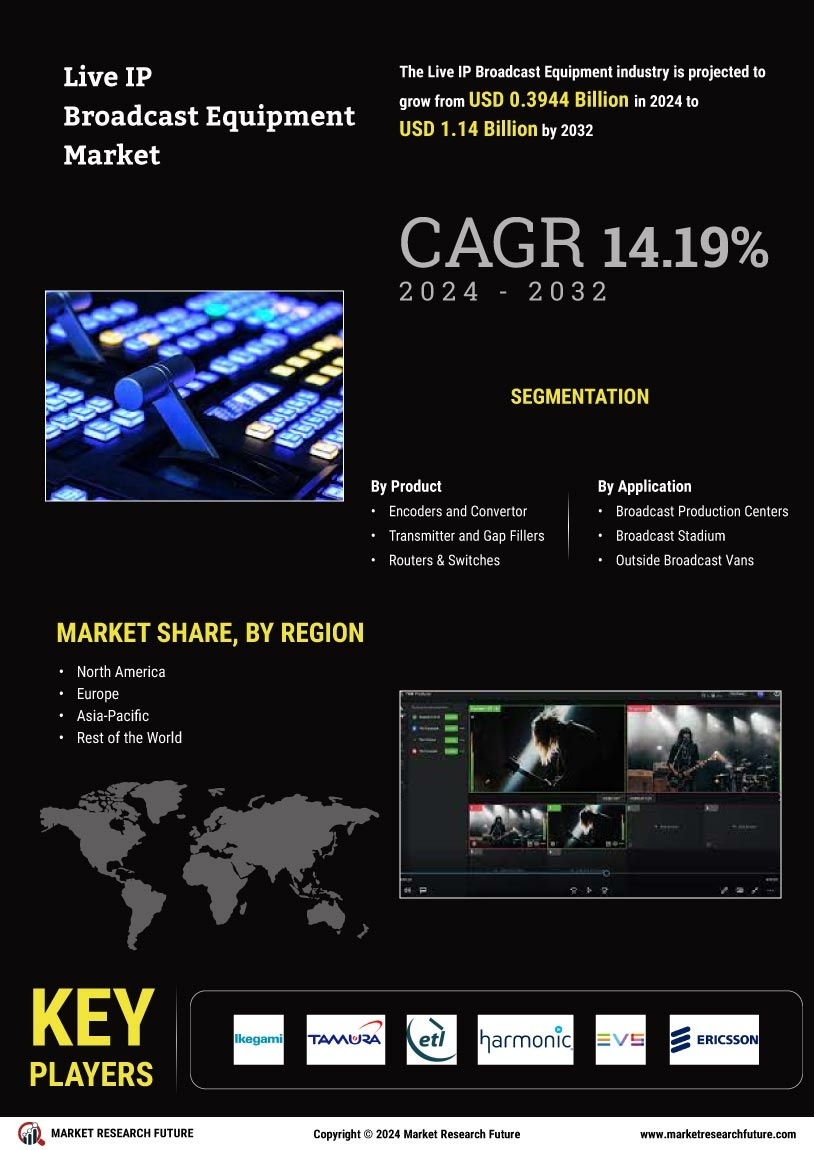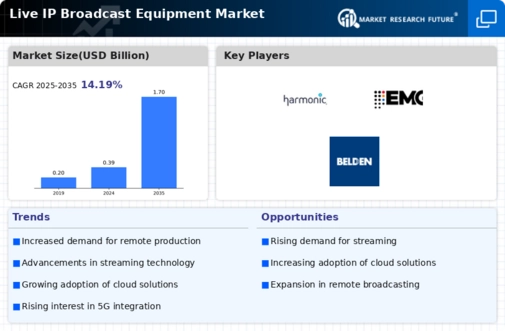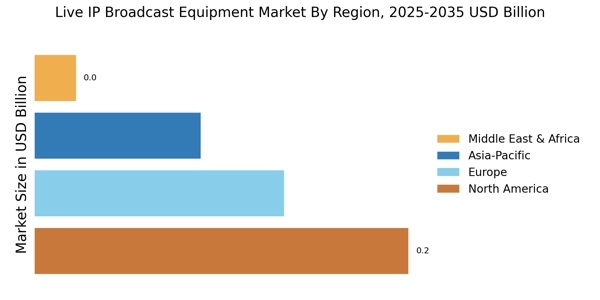Adoption of Cloud-Based Solutions
The adoption of cloud-based solutions is transforming the Live IP Broadcast Equipment Market. Broadcasters are increasingly leveraging cloud technology to streamline their operations and enhance flexibility in content delivery. This shift allows for scalable solutions that can adapt to varying production needs. Market data indicates that the cloud broadcasting segment is experiencing rapid growth, with many companies transitioning to cloud-based workflows. This trend not only reduces operational costs but also facilitates remote collaboration among production teams. As broadcasters seek to optimize their resources and improve efficiency, the demand for cloud-compatible IP broadcast equipment is expected to rise, further driving market growth.
Growing Demand for High-Quality Streaming
The increasing demand for high-quality streaming content is a primary driver of the Live IP Broadcast Equipment Market. As audiences expect superior video and audio quality, broadcasters are compelled to invest in advanced IP broadcast equipment. This trend is reflected in the market data, which indicates that the demand for 4K and 8K streaming solutions is on the rise. In 2025, the market for high-definition streaming is projected to grow significantly, with a notable increase in the adoption of IP-based technologies. Consequently, manufacturers are focusing on developing equipment that meets these high standards, thereby enhancing the overall quality of live broadcasts. This shift not only caters to consumer preferences but also positions broadcasters competitively in a saturated market.
Expansion of Live Sports and Events Broadcasting
The expansion of live sports and events broadcasting is a crucial factor influencing the Live IP Broadcast Equipment Market. With the proliferation of digital platforms, there is a growing appetite for live coverage of sports and entertainment events. Market data suggests that the sports broadcasting segment is expected to witness substantial growth, driven by the increasing number of viewers and the demand for real-time content. Broadcasters are investing in IP broadcast equipment to enhance their capabilities in delivering live events seamlessly. This trend is further supported by partnerships between sports leagues and media companies, which aim to provide immersive viewing experiences. As a result, the demand for reliable and efficient live IP broadcast solutions is likely to continue its upward trajectory.
Increasing Investment in Media and Entertainment
Increasing investment in the media and entertainment sector is a significant driver of the Live IP Broadcast Equipment Market. As companies recognize the potential for growth in digital content consumption, they are allocating substantial resources towards enhancing their broadcasting capabilities. Market data indicates that investments in media infrastructure are projected to rise, particularly in regions with burgeoning digital audiences. This influx of capital is likely to spur demand for advanced IP broadcast equipment, as broadcasters aim to improve their production quality and reach wider audiences. Furthermore, the competitive landscape is pushing companies to innovate and adopt cutting-edge technologies, thereby propelling the market forward.
Technological Advancements in Broadcast Equipment
Technological advancements in broadcast equipment are significantly impacting the Live IP Broadcast Equipment Market. Innovations such as 5G technology, artificial intelligence, and machine learning are enhancing the capabilities of IP broadcast solutions. These advancements enable broadcasters to deliver content with lower latency and improved reliability. Market data suggests that the integration of AI in broadcasting is set to revolutionize content creation and distribution, allowing for more personalized viewer experiences. As technology continues to evolve, broadcasters are likely to invest in state-of-the-art IP broadcast equipment to stay competitive. This ongoing evolution is expected to drive the market forward, as companies seek to leverage new technologies to enhance their broadcasting capabilities.

















Leave a Comment